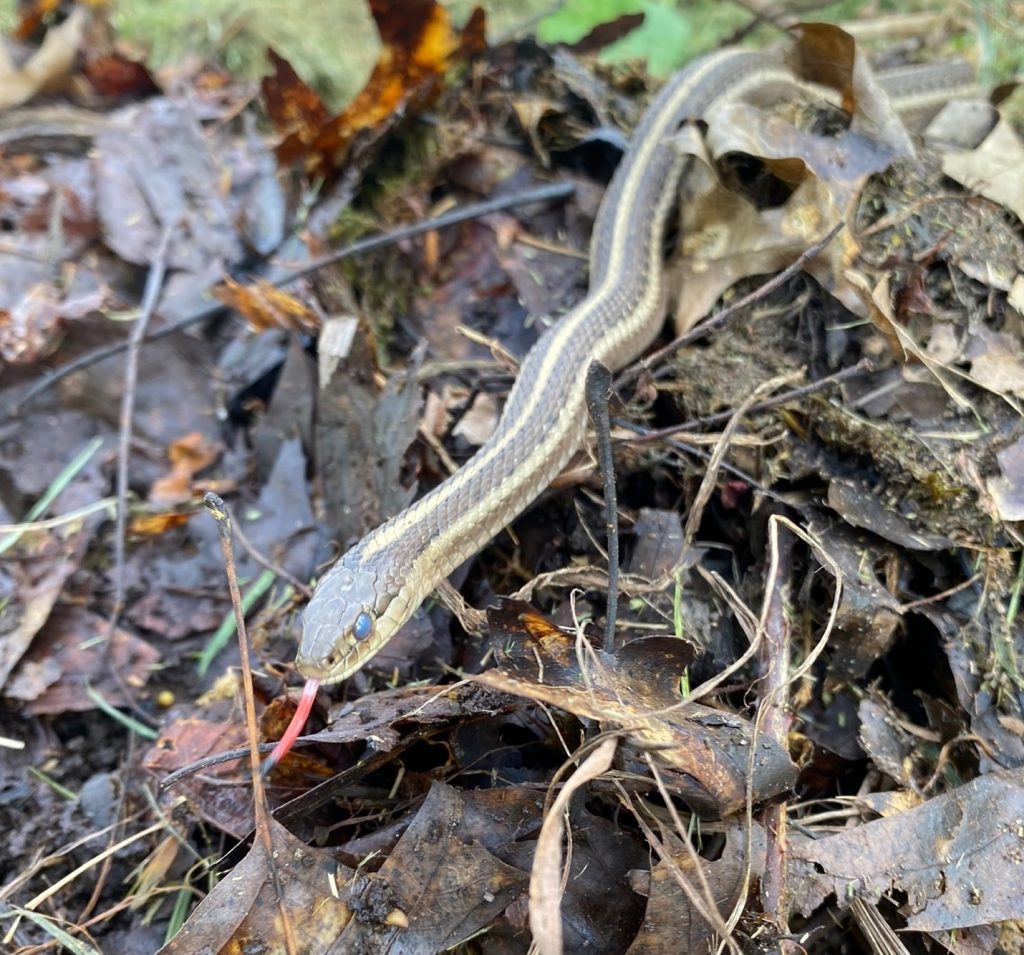Can you imagine eating a slug? This thought for most of us is simply disgusting. Yet, aren’t slugs just a snail without a shell? And eating snails is the French delicacy known as escargot. French appetites aside, slugs in our area are universally considered to be the slimy pests of our yards and gardens. And, like us, not many animals find them appetizing.

However, you may have a slug eater living in your yard. The northwestern garter snake is thought to specialize in eating slugs (and other invertebrates) and can help reduce the number of slugs around your home. Northwestern garter snakes (Scientific name; Thamnophis ordinoides) are one of 4 species of garter snakes found in Oregon and one of two species commonly found in Marion County. The color of the stripes on northwestern garter snakes is highly variable, which can make their identification confusing. You may happen upon garter snakes with red, orange, blue, or yellow stripes, Garter snakes are relatively small with most from one to two feet in length.

The other common species in our area is the appropriately named common garter snake. A colorful subspecies of the common garter snake, is the red-spotted garter snake (Scientific name: Thamnophis sirtalis concinnus), which is almost exclusively limited to the Willamette Valley, although a few may be found in other parts of NW Oregon and SW Washington. Red-spotted garter snakes are larger than northwesterns and typically found near wetlands and other moist areas. They may eat slugs, earthworms, and other invertebrates while young, but probably don’t specialize on slugs like the northwestern garter snake. Larger red-spotted garters will also eat vertebrates like small mice, salamanders, newts, and frogs.

Although snakes are scary to many people, having these harmless garter snakes around your home is an indicator of a healthy environment – and they can help you with pest control. You can encourage them on your property by providing some habitat. Compost piles, brush piles, and uncut areas of natural vegetation will all provide habitat for garter snakes. Compost piles in particular provide a good food source for garter snakes and they will also take advantage of the heat created by decomposing organic matter. Of course, the compost can also be used for your gardening.

Leaving an old piece of plywood or roofing tin (known as coverboards) on the ground near potential snake habitat will also benefit the cold-blooded garter snakes. The snakes will take refuge under the boards to warm up and also to feed on earthworms, slugs, and other critters found under coverboards. Coverboards don’t need to be large to be effective; a good size coverboard is 2’x2’.
Slug-eating garter snakes probably won’t replace dogs as human’s best friend, but having the harmless garter snake around your home is a gardener’s best friend, even if we don’t share their taste for slugs.
About the Author

A retired wildlife biologist, Dave and his wife Anita, have resided near Turner since 2003. Dave serves as a Director on the Board of MSWCD, the values and services of which he first became aware about 15 years ago while implementing an NRCS conservation easement on their property.
